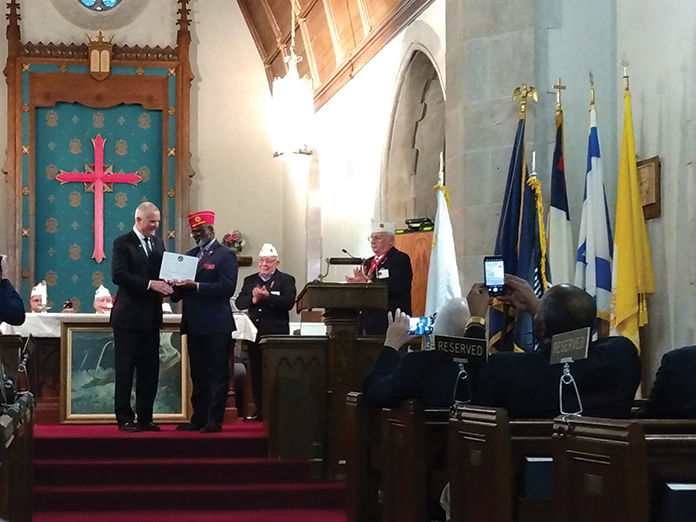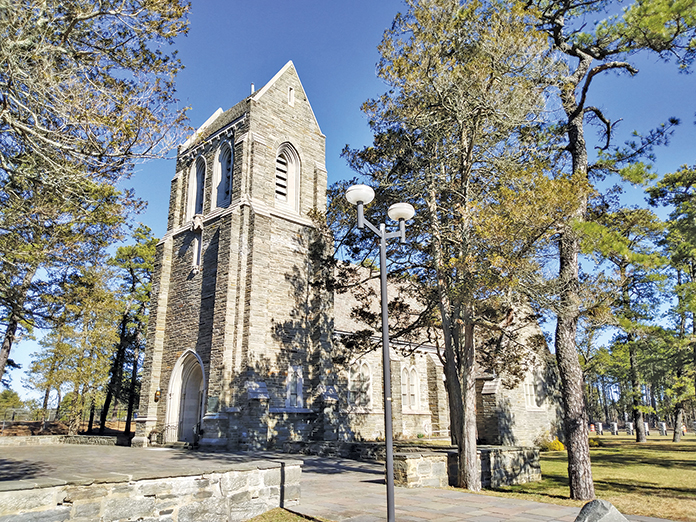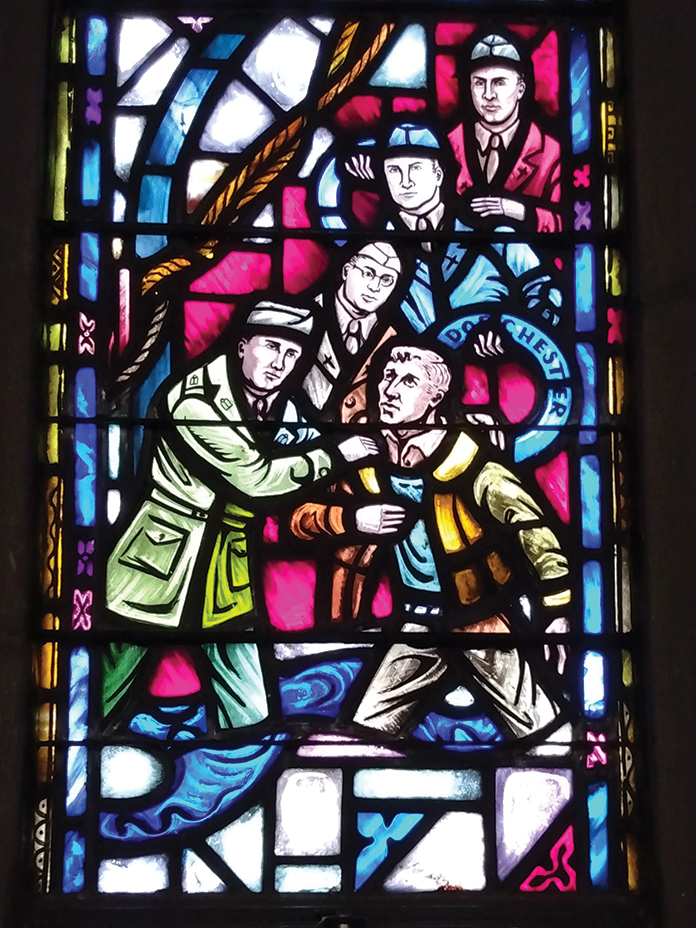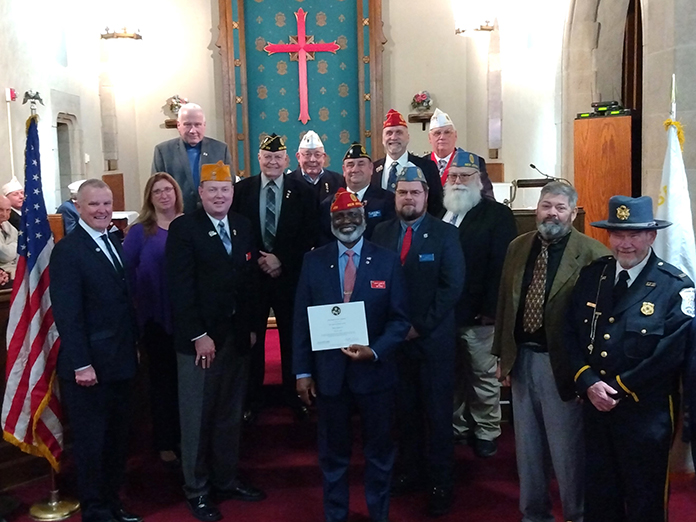
MANCHESTER – On a near-perfect winter day, the annual ceremony commemorating the Four Chaplains was held at the historic Cathedral of the Air.
With the assistance of American Legion Post 129 in Toms River, the Cathedral of the Air Committee held their annual commemorative event, honoring the four Army chaplains of various faiths who selflessly assisted their fellow servicemen in the early morning hours of February 3, 1943.
The story was recounted by the National Director of the Four Chaplains Foundation, William Kaemmer, who gave the memorial address to the crowd in attendance.
Setting sail from New York on January 23, 1943, the S.S. Dorchester with 902 servicemen, merchant seamen, and civilians onboard, was passing the coast of Newfoundland at about 12:55 a.m. when it encountered a German submarine patrolling the North Atlantic. Converted into an Army transport carrier, the 5,649-ton vessel was targeted by submarine U223, which torpedoed the ship as it ferried soldiers bound for service in the European Theater. The transport vessel quickly began to take on water and would, in less than 30 minutes, sink below the icy waves of the North Atlantic.
As the ship began to sink, the four chaplains of different religions, Lt. George L. Fox (a Methodist reverend), Lt. Alexander D. Goode (a rabbi), Lt. Clark V. Poling (a Baptist reverend) and Lt. John P. Washington (a Catholic priest) worked to calm the soldiers and help facilitate an orderly evacuation. While the deckhands attempted to pass out life vests to all the men onboard, the supply ran out before each man had received one.
It was at this point that the four chaplains offered up their own life vests to the other servicemen and then looked to help as many men as possible into the lifeboats.

“This act is selfless service,” said Kaemmer. “They gave up their life jackets to save others. And again, think about this. People died in the war all the time. These guys voluntarily gave up their only chance for survival.”
When they could do no more to assist physically, the four then linked arms and looked to console any remaining crew members by leading communal prayers and singing hymns. The four men went down with the ship and were posthumously awarded both the Distinguished Service Cross and the Purple Heart on December 19, 1944.
Each of the chaplains were nominated to receive the Medal of Honor, but were declared ineligible as they had not engaged in combat with enemy forces. Subsequently, the Four Chaplains’ Medal was created by the United States Congress on July 14, 1960, and were presented posthumously to the next of kin of each of the four chaplains on January 18, 1961.
Twenty-seven years later, Congress established February 3 as Four Chaplains Day. This day is often marked with official proclamations, commemorative events and many municipalities will even fly flags at half-mast.
During the ceremony, American Legion member Berley Hanna, Jr. was presented the Legion of Honor of the Chapel of the Four Chaplains award. The award, which is presented annually, is essentially a humanitarian award given to individuals who have demonstrated acts of selfless service to the community at large.
“It was a body of work,” said Past Department Commander Roger Gengaro of the American Legion. Gengaro, who spoke at the service, was the individual who had nominated Hanna for the award. “It wasn’t just [this] year. I’ve known him for quite some time and I’ve served with him on many different committees and programs. I feel like he was a person that was eligible for the Legion of Honor Award not only for what he did, but the way he goes about doing it. He’s a genuine person and to me, that’s important.”
After receiving the award, Hanna was joined by past award winners, who received a standing ovation from those who had attended the service.

“It doesn’t have to do with military service,” said American Legion chaplain Michael Schaffer, who led the service and acted as its moderator. “It has to do with the fact that you have a concern about your fellow man, and you’ve gone above and beyond the necessary to make sure that people get taken care of, or their situation gets resolved.”
The Cathedral of the Air sits nestled within the pine trees as part of Joint Base McGuire-Dix-Lakehurst, and was originally conceived as a memorial chapel to those individuals who had lost their lives in aerial service to their country. While its imposing stone exterior carries a sense of grandeur, the interior is solemn, with numerous commemorative plaques adorning its walls.

One of the most striking tributes can be seen immediately upon entering the cathedral, as a stained-glass window commemorates the tragic events of February 3, 1943, and the four chaplains of the Dorchester.
“The sacrifice that those gentlemen made that night was something above and beyond what [most] of the people on the planet would ever do,” said Schaffer. “And not necessarily are they being honored for their heroism; they’re being honored for the commitment that they made when they decided to go into the ministry to serve their brothers. No man can do a greater deed than laying his life down for another.”







